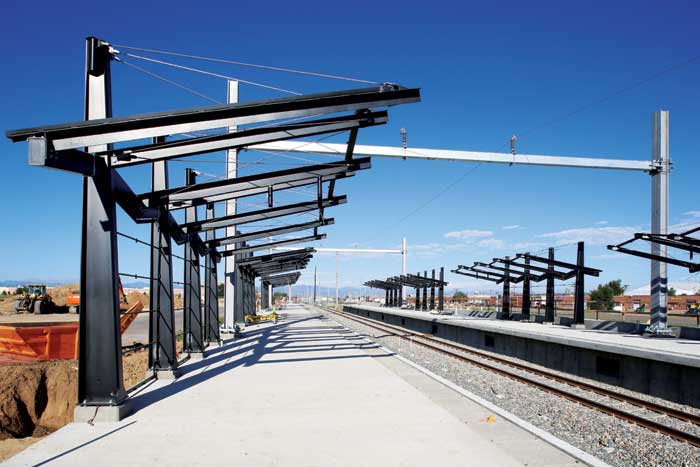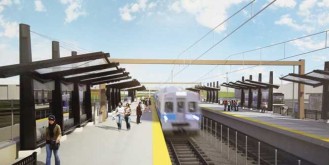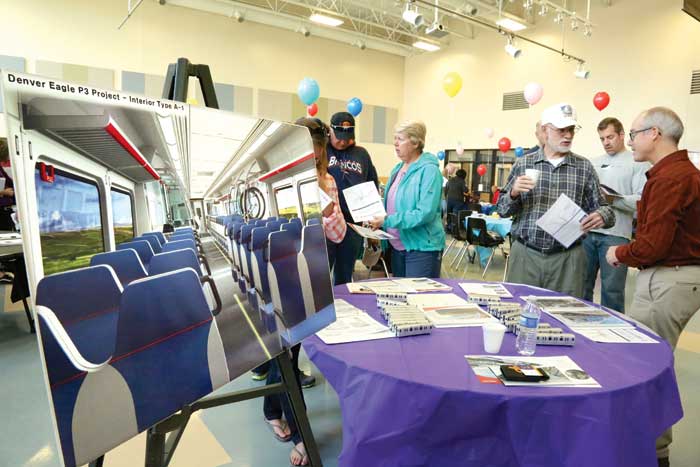
Central Park Station looks just like station renderings (below) that were shown before construction started.
 RTD and Denver Transit Partners (DTP) staff hosted an open house on Sept. 13 at Swigert School to show progress on the East Line. The project is on time and on budget.
RTD and Denver Transit Partners (DTP) staff hosted an open house on Sept. 13 at Swigert School to show progress on the East Line. The project is on time and on budget.
Kevin Flynn, Public Information Officer for the Eagle P3 Project, explains that the public private partnership (hence P3) is being built under a fixed price contract for $1.03 billion dollars. “The risk has been transferred to them. If they have to redesign something or add something, they have to absorb that into what we’ve agreed to pay them. They absorb cost increases. They can only come back to us if we add things to the project.”
The East Line, at 22.8 miles long, is one portion of the Eagle P3 project that has a total of 36 miles of commuter rail line (heavier cars than existing light rail)—and is 63% completed. The entire Eagle P3 Project includes the Gold Line to Arvada and Wheat Ridge, the Northwest Rail Line to Westminster, and the Commuter Rail Maintenance Facility. Official progress reports are for the entire project, but the East Rail Line’s progress is thought to be slightly higher than that figure. The Eagle P3 Project lines are all expected to open in 2016, one at a time, with the East Rail opening first.
Central Park Station in Stapleton was the first station to get the canopies built (shown above), which went up in September. Mortenson, which built the infrastructure, has also been selected to build the Park-n-Ride.

Brian Donohue (far right), an engineer with DTP, answers questions at the open house. A rendering of the interior of a commuter rail car is at left.
The first trains will be arriving in November and the public will have an opportunity to tour a train at Union Station. The first test trains are expected to start on the East Line in May 2015. Engineer Brian Donahue explained that testing of the system will be a very gradual process, with each component tested individually over a period of time before trains actually start to run. Electrical systems will be turned on one by one and tested; the gates at the grade crossings will be individually tested to be sure the public will be fully aware when trains are approaching; finally when the components have been tested, the trains will run and gradually be increased to their maximum speed of 79 mph. At that point, operator training can begin.




0 Comments